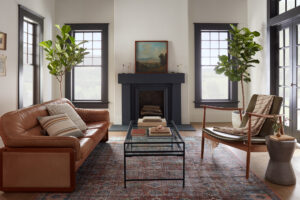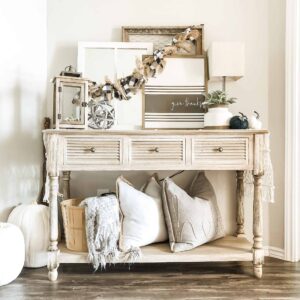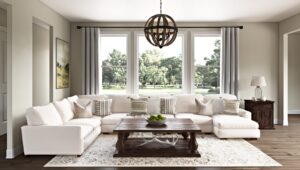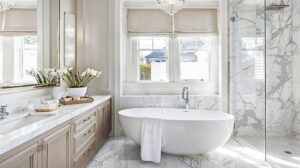Living Space: The Evolution of Home Design and the Quest for Comfort
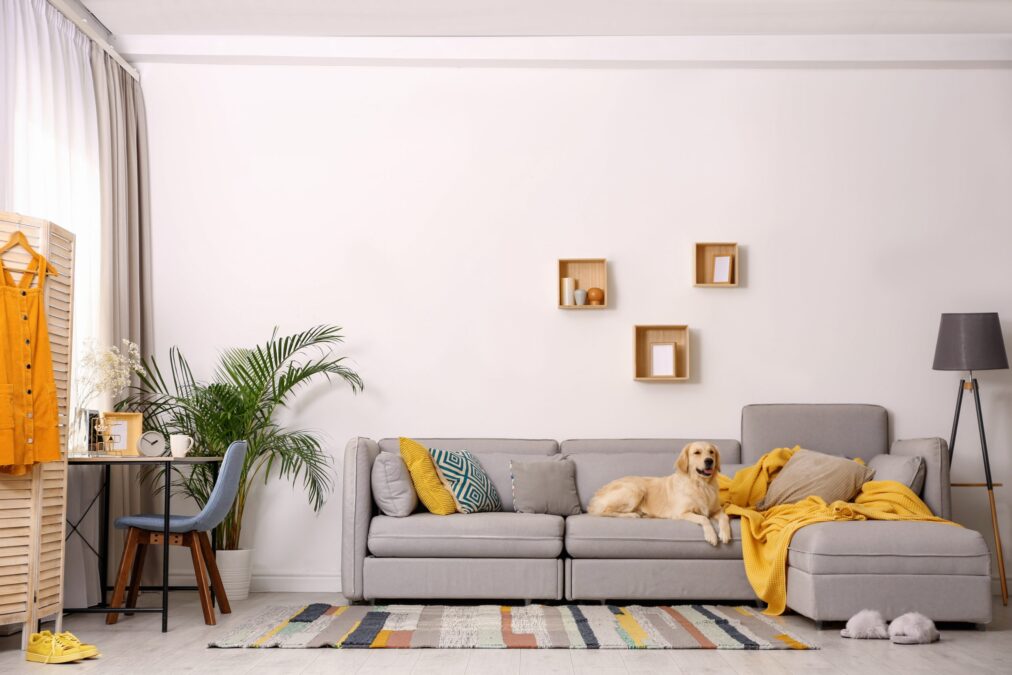
It was a typical Saturday morning when Maya, a freelance graphic designer, stood by her window, sipping coffee and gazing out at the quiet street below. The sun cast a golden hue across her apartment, filling the space with warmth. Though her apartment wasn’t large by traditional standards—just a cozy one-bedroom in a bustling city—it was hers, and it provided everything she needed. A comfortable bed, a dedicated workspace, and a calm sanctuary from the outside world. For Maya, her living space was more than just a place to sleep; it was her home office, her retreat, and her creative hub.
Over the past few years, the concept of living space has evolved significantly, shaped by changes in lifestyle, technological advancements, and shifting societal values. As more people work from home, focus on wellness, and navigate the complexities of urban living, the way we think about and design our living spaces has transformed. From maximizing small apartment layouts to prioritizing multi-functional rooms, today’s living spaces reflect a greater emphasis on comfort, efficiency, and emotional well-being.
This article will explore the evolving nature of living spaces, their impact on our daily lives, and how trends in design, technology, and sustainability are shaping the homes of the future. We will also look at statistical data to understand how different demographics approach the concept of “home” and how these preferences are influencing the global housing market.
Defining Living Space: More Than Just Square Footage
When we talk about living space, we are referring to the areas within a home or apartment where people live, work, and interact. Traditionally, living space was measured by square footage, with larger homes offering more freedom and flexibility. However, modern living spaces are now evaluated by their functionality, comfort, and ability to meet the unique needs of their inhabitants.
In the past, a living room might have been seen as the central area for family gatherings, but today’s homes may feature open-plan layouts where the kitchen, living room, and dining area are integrated into one expansive space. This flexibility allows families or individuals to use the same area for multiple purposes—entertaining, working, cooking, and relaxing—without feeling confined to traditional room categories.
As people spend more time at home, especially in the wake of the COVID-19 pandemic, the emotional and psychological aspects of living space have gained prominence. A home isn’t just where we sleep, but a place where we can thrive—mentally, physically, and emotionally. Research shows that the quality of our living space directly impacts our mental health, productivity, and overall well-being.
The Rise of Small Living Spaces: Maximizing Functionality
One of the most notable trends in recent years is the rise of smaller living spaces. As urbanization accelerates, more people are moving into cities, and the demand for affordable housing continues to grow. In response, developers and designers are innovating ways to make small apartments and homes feel larger and more functional.
In 2020, Statista reported that the average size of new homes in the U.S. had been shrinking for the first time in years, with the average size dropping from 2,600 square feet in 2015 to just over 2,300 square feet in 2020 (Statista, 2020). This shift reflects a broader change in the way people think about living space. While larger homes were once seen as a symbol of success, today’s homebuyers are increasingly interested in more efficient and practical living environments.
The trend toward smaller living spaces has also been amplified by the tiny house movement, which advocates for homes that are less than 400 square feet. Tiny homes offer individuals and families the opportunity to live more sustainably, minimize their environmental footprint, and embrace a minimalist lifestyle. In 2021, 2.6 million people in the U.S. reported living in a tiny house, according to a survey by the Tiny House Community (Tiny House Community, 2021).
Designers have responded to the demand for smaller living spaces by emphasizing multi-functional furniture, such as fold-out desks, wall-mounted storage, and convertible beds. These features make it possible to transform a small studio apartment into a home office, living area, and bedroom all in one, without sacrificing comfort.
The Influence of Technology on Living Space Design
The role of technology in shaping modern living spaces cannot be overstated. From smart home devices to home automation systems, technology is making it easier for homeowners and renters to optimize their living environments for comfort, convenience, and security. Smart homes have become so popular that the global market for smart home devices is expected to reach $79 billion by 2025, growing at an annual rate of 25% (Statista, 2022).
Some of the most common technological innovations in modern living spaces include:
- Smart Thermostats: Devices like Nest allow users to control their home’s temperature remotely and adjust it based on their habits, saving energy and reducing utility bills.
- Home Automation: Systems like Amazon Alexa and Google Assistant enable homeowners to control everything from lighting and security cameras to appliances and entertainment systems with just a voice command.
- Smart Appliances: From refrigerators that can help you track groceries to ovens that can be controlled via smartphone, smart appliances are increasingly becoming standard in today’s kitchens.
Technology is also making it easier for people to work from home, with features like high-speed internet, video conferencing setups, and ergonomically designed workspaces becoming an integral part of modern living spaces. The work-from-home trend—accelerated by the COVID-19 pandemic—has made it clear that people want homes that can function as both personal and professional environments. A 2021 survey by Gallup found that 45% of U.S. employees worked remotely full-time, and 26% worked remotely part-time (Gallup, 2021).
The Role of Wellness in Living Space Design
As people become more aware of the connection between physical and mental health, wellness design has gained traction in the world of home interiors. The idea is that your living space should not only be aesthetically pleasing but also conducive to promoting your well-being. This includes features like good air quality, natural light, green spaces, and layouts that reduce stress and enhance relaxation.
The concept of wellness in living space design is reflected in a growing demand for biophilic design, which incorporates natural elements like plants, natural materials, and open spaces into the built environment. According to the International WELL Building Institute, incorporating biophilic design into living spaces can reduce stress and improve mood, leading to better overall health (IWBI, 2021).
Moreover, the pandemic has highlighted the importance of home as a sanctuary, with many people now prioritizing home gyms, meditation corners, and spa-inspired bathrooms as essential components of their living spaces. A report from Houzz in 2022 showed that nearly 60% of homeowners were investing in wellness-focused renovations like upgraded bathrooms, dedicated fitness spaces, and home saunas (Houzz, 2022).
Sustainability and Eco-Friendly Living Spaces
Sustainability has become a key consideration in modern living spaces, with a growing number of homeowners and developers adopting green building practices. Energy-efficient homes, use of sustainable materials, and solar power are just a few ways in which new homes are minimizing their environmental impact. As climate change becomes an increasingly urgent issue, the demand for sustainable living spaces is expected to rise.
According to a 2021 report by the National Association of Home Builders (NAHB), 45% of U.S. homebuyers indicated that they were willing to pay more for a home with green features, such as energy-efficient windows, solar panels, and eco-friendly insulation (NAHB, 2021). In addition, homes that are designed with sustainability in mind often have lower operating costs over time, making them an attractive investment for buyers looking for long-term savings.
The Future of Living Space: Adapting to New Needs
As the way we live continues to evolve, so too will the design of living spaces. The future will likely see even more adaptable, sustainable, and tech-enabled homes, designed to meet the changing needs of a diverse and mobile population.
Key trends that will shape the future of living spaces include:
- Smarter homes with integrated AI can anticipate the needs of residents, adjusting lighting, temperature, and entertainment preferences automatically.
- Modular designs allow homes to expand and contract based on the needs of the inhabitants, offering flexibility in terms of space usage.
- Increased focus on sustainability, with more homes incorporating zero-waste systems, renewable energy, and sustainable building materials.
Conclusion
Living space is no longer just about square footage—it’s about creating environments that enhance our quality of life, promote well-being, and allow us to adapt to the challenges of modern living. Whether through efficient design for small apartments, the integration of cutting-edge technology, or a focus on wellness and sustainability, today’s living spaces reflect a broader understanding of what it means to feel truly “at home.”
As we look toward the future, it’s clear that living spaces will continue to evolve, offering new opportunities for people to live more comfortably, sustainably, and meaningfully in their homes.

